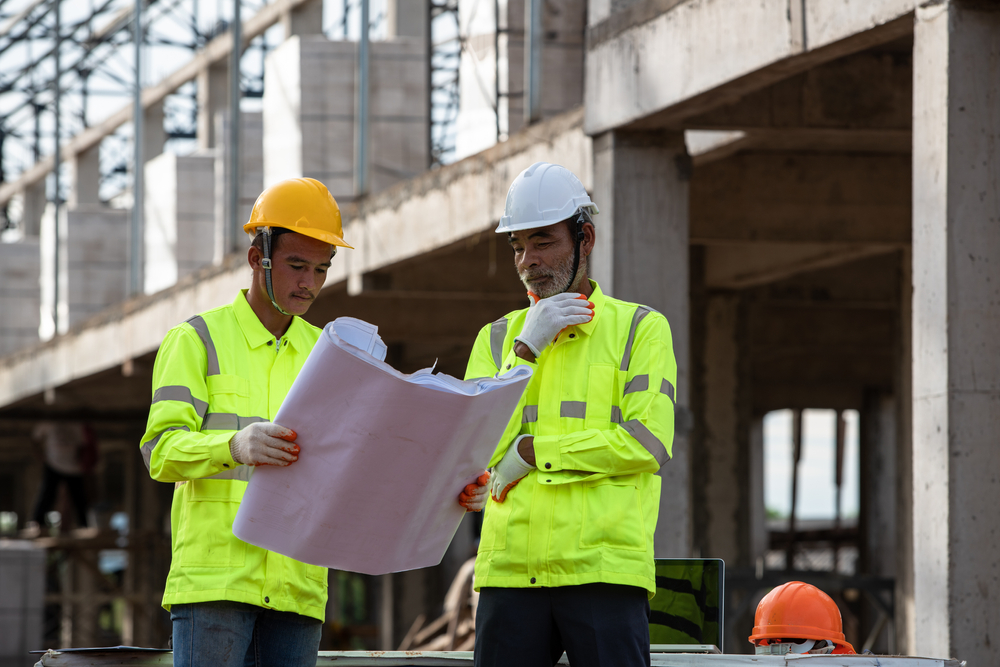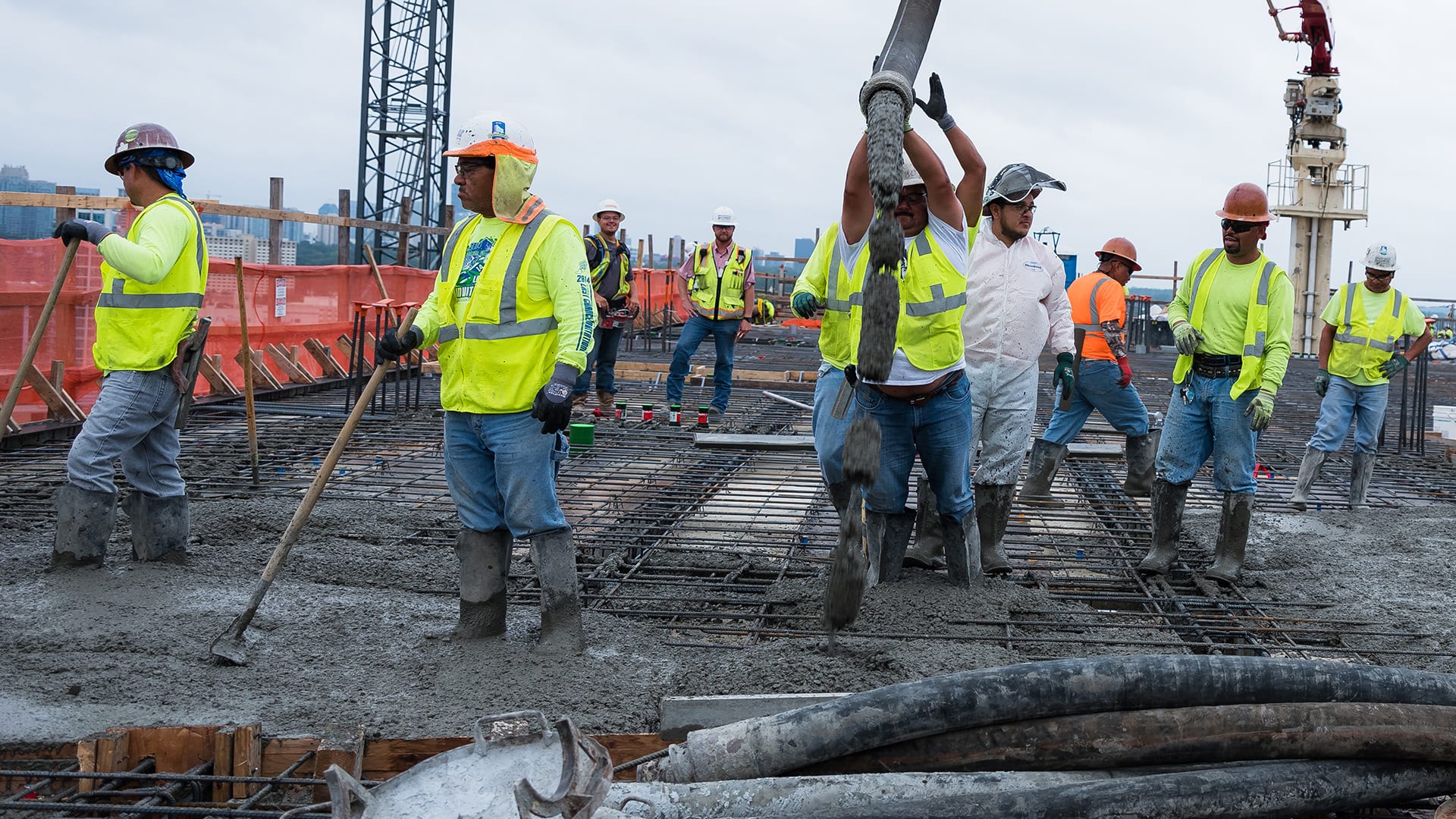The Important Function of Concrete Structure in Structural Stability and Durability
When it comes to constructing a building, the structure is a lot more crucial than you might believe. Concrete foundations supply unmatched toughness and resilience, ensuring your structure can withstand numerous environmental challenges. Without a strong base, you risk potential concerns like changing or cracking, which can jeopardize safety and security and value. Recognizing the nuances of concrete foundations could be the key to protecting your financial investment for several years ahead. What should you think about following?
Comprehending the Significance of Concrete Foundations
Concrete structures are important to the total stability of any kind of framework, as they provide the necessary assistance required to endure different loads and ecological conditions. When you consider building a home or an industrial area, the structure is the very first point you should think about. It acts as an obstacle against wetness, safeguarding your residential property from water damages. A well-placed concrete structure additionally stops settling and changing, which can result in fractures in walls and floors. You'll desire to guarantee that the foundation is effectively created and reinforced, as this affects the long life of your building. Additionally, a strong structure can enhance power efficiency by decreasing air leaks. Keep in mind, overlooking the value of a concrete structure can bring about costly repair services down the line. Investing in a top quality structure upfront is necessary for the stability and toughness of your structure.
Advantages of Concrete Structures for Architectural Stability
While lots of variables contribute to a building's architectural honesty, concrete structures use unmatched longevity and strength. You'll appreciate that concrete can stand up to extreme weather, standing up to both moisture and temperature changes. This resilience implies your structure is less most likely to experience fracturing or moving with time, which can compromise its safety.Additionally, concrete's inherent weight supplies a strong base, preventing activity during natural events like quakes or floodings. When you pick a concrete foundation, you're additionally choosing for low upkeep; unlike wood, it will not rot or draw in insects, saving you time and money in repairs.Moreover, concrete's fire resistance offers added safety and security, guaranteeing your framework can withstand high temperature levels without substantial damage. Overall, buying a concrete structure suggests you're prioritizing the lasting security and stability of your structure, making it a sensible selection for any kind of building task.
Typical Types of Concrete Foundations
When it pertains to constructing foundations, comprehending the common kinds of concrete structures can aid you make educated choices for your project. One of the most prevalent types include slab-on-grade, crawl room, and complete basement foundations.A slab-on-grade structure is a straightforward, economical alternative, where a thick concrete slab is poured straight on the ground. This type works well in cozy climates, as it minimizes warm loss.Crawl area structures elevate the home a little above ground, enabling air flow and access to pipes and electric systems. This style can aid stop moisture issues.Full basement foundations provide additional living or storage area while providing outstanding structural support. They call for even more excavation and are usually utilized in colder environments to protect against frost heave.
Factors to Consider When Designing a Concrete Structure

Ideal Practices for Putting Up Concrete Foundations
When you're installing a concrete foundation, appropriate website preparation is important to ensure security (West Coast General Engineering commercial concrete Rancho Cucamonga). You'll additionally require to understand support methods to boost toughness and toughness. Ultimately, do not neglect the treating procedure, as it plays an essential duty in achieving a solid foundation
Site Preparation Value
Although it might seem simple, appropriate site preparation is vital for assuring a strong and long lasting concrete foundation. Beginning by removing the location of any kind of particles, greenery, or natural material that might compromise the structure's honesty. Next, evaluate the dirt kind and compaction; you could need to dig deep into or add materials to create a steady base. Degree the ground to guarantee also weight circulation and avoid resolving issues later. Setting up proper drainage systems is likewise necessary to prevent water buildup, which can compromise the foundation in time. Mark out the foundation's dimensions precisely to assist the putting process. By following these steps, you'll set the stage for a successful concrete foundation that stands the examination of time.
Support Strategies Described
When the site is appropriately prepared, the next action in ensuring a sturdy concrete foundation includes carrying out efficient reinforcement techniques. You ought to begin by utilizing steel rebar, which provides tensile strength and aids protect against splitting. Lay the rebar in a grid pattern, seeing to it it's elevated using spacers to preserve appropriate protection. In addition, take into consideration using wire mesh for additional assistance, specifically in areas subject to heavy loads. Do not forget to link the rebar intersections securely with wire. For larger foundations, fiber support can improve longevity, decreasing the danger of contraction splits. Constantly comply with neighborhood building regulations and standards to make certain conformity. By using these reinforcement techniques, you'll significantly boost your structure's strength and longevity, laying a solid foundation for your framework.
Treating Process Fundamentals
To guarantee your concrete foundation remedies appropriately, it is essential to keep sufficient dampness and temperature conditions immediately after pouring. Beginning by covering the surface area with a wet cloth or plastic bed linen to preserve wetness. This maintains the concrete hydrated, protecting against cracks and making certain strength. You must likewise monitor the temperature level; optimal treating conditions are in between 50 ° F and 90 ° F. If it's as well warm, mist the surface read more area on a regular basis to protect against quick evaporation. For cool weather, think about making use of protecting coverings to preserve heat. Goal for a curing duration of at the very least seven days, as this is vital for optimal strength development. By following these best techniques, you'll improve your structure's resilience and longevity, guaranteeing structural integrity for years to find.
Maintenance of Concrete Structures for Longevity
To keep your concrete structure solid and enduring, routine assessments are crucial. You need to additionally guarantee efficient drain options are in location to avoid water damage. If you identify any kind of splits, addressing them promptly will conserve you from larger problems down the line.

Normal Assessments and Analyses
While regular evaluations and evaluations might seem like a chore, they're crucial for maintaining the integrity of your concrete foundation. By consistently looking for cracks, shifts, or signs of wear, you can capture prospective problems prior to they rise right into expensive fixings. Seek any kind of water merging around the foundation or unusual settling, as these can signify underlying issues. It's additionally important to keep an eye on any changes in your home's framework, like doors that stick or windows that don't open smoothly. Maintaining a record of your evaluations assists track modifications over time, permitting for positive maintenance. Inevitably, these evaluations assure your foundation continues to be secure, sustaining the long life and safety of your whole framework. Do not forget this critical aspect of homeownership!
Effective Drainage Solutions
Regular evaluations can disclose problems like drain issues that may endanger your concrete foundation's security. To avoid water build-up, ensure your gutters and downspouts direct water far from the structure. Installing French drains can effectively reroute surface and groundwater, minimizing pressure on your foundation walls. Additionally, grading the dirt around your home helps ensure that water moves away, as opposed to pooling near your foundation.Consider utilizing sump pumps in areas vulnerable to flooding, as they proactively eliminate excess water. Routinely examine for clogs in drain systems and clear them quickly. You'll secure your foundation's integrity and long life by taking these positive measures. Keep in mind, efficient drainage solutions are important for preserving a solid, durable concrete structure.
Prompt Crack Repair Works
When you notice splits in your concrete foundation, addressing them quickly is crucial for maintaining its long life. Tiny cracks can swiftly evolve into bigger problems, endangering the architectural stability of your home. Consistently inspect your structure for indicators of damages, such as horizontal or upright cracks. If you spot any type of, do not wait-- repair them right away. You can use epoxy injections or concrete patching compounds, which work for securing cracks. Always comply with the manufacturer's directions and think about speaking with a specialist for considerable damage. Remember, prompt fixings not only enhance your structure's sturdiness but additionally conserve you cash in the future by stopping more comprehensive fixings down the line. Remain proactive, and your structure will certainly continue to be solid and secure.
Attending To Common Problems With Concrete Structures
Concrete foundations can deal with different issues in time, making it essential to identify and resolve them immediately. Among one of the most usual troubles is splitting, which can occur because of temperature level variations or clearing up dirt. If you observe fractures, it's vital to assess their dimension and depth; little splits can frequently be sealed, while bigger ones may need expert evaluation.Water intrusion is an additional major worry. Excess wetness can cause mold and mildew growth and architectural damage. Warranty correct water drainage around your structure to reduce this threat. In addition, look for indications of changing or bowing walls, as this can indicate underlying issues with your structure's stability.Regular evaluations are basic to capture these troubles early. If you spot any worrying indications, do not hesitate to consult a foundation specialist. By remaining aggressive, you can keep the honesty and durability of your concrete foundation, guaranteeing your home stays safe and safe and secure.
Often Asked Questions
Exactly How Does Dirt Kind Impact Concrete Structure Performance?
Dirt kind considerably affects concrete structure efficiency. If you've got extensive clay, for circumstances, it can create changing and fracturing. Sandy dirt may bring about working out. Understanding your soil helps ensure a steady structure.
Can Concrete Foundations Be Fixed if Damaged?
Yes, you can repair damaged concrete structures. Depending upon the degree of the damage, strategies like epoxy shot or slab jacking can recover security. It's ideal to seek advice from a professional for reliable solutions.
What Is the Common Life Expectancy of a Concrete Foundation?
A concrete structure commonly lasts 30 to 100 years, depending on elements like dirt conditions, environment, and maintenance. You'll wish to keep an eye on it to assure it remains healthy throughout its life expectancy.
Exist Choice Materials to Concrete for Foundations?
Yes, there are choices to concrete for foundations, like steel, timber, or perhaps recycled materials. Each option has distinct advantages and disadvantages, so you ought to consider your job's details demands when picking the right product.
Just How Does Environment Effect Concrete Structure Toughness?
Climate considerably impacts concrete structure toughness (West Coast General Engineering concrete foundation Rancho Cucamonga). Extreme temperatures, moisture, and freeze-thaw cycles can weaken the material, leading to fractures and architectural issues. You ought to consider local environment conditions when intending your structure to guarantee long-term efficiency